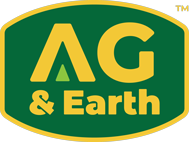Conducting Effective Pre-Start Equipment Checks
What exactly entails a Pre-Start Check? Before utilising any machinery, a Pre-Start Check ensures safety through routine inspections. These checks, typically mandated for plant, equipment, and machinery, are performed before commencing use each day, or upon arriving at a new job site or with a new operator.
Typically (but not always) carried out by equipment operators, pre-start checks involve the aid of an inspection checklist. In instances where these checks impact safety related workplace issues, they are usually documented.
These checks serve to:
- identify safety issues,
- maintenance concerns,
- existing damages prior to use,
- some external factors impacting use
- factors mitigating the risk of accidents or malfunctions during usage.
The Significance of Pre-Start Checks
Conducting a comprehensive check for damages or faults before initiating equipment use is paramount for safety.
When it comes to mobile plant and production equipment, pre-start checks can be pivotal. They enable the receiver of a hired or owned machine to spot and rectify minor issues before they escalate into serious problems or accidents. Examples include verifying the proper functioning of brakes, lights, steering mechanisms, and inspecting oil or water levels to ensure optimal equipment operation.
Essential Components of our Pre-Start Checklist
Utilising a checklist aids customers in conducting a standardised pre-start check.
The contents of these checklists vary depending on the type of equipment. Typically, equipment suppliers furnish detailed instructions on what should be included in daily pre-start checks within the Operation Manual. Pre-Start checks can be augmented by company policies and procedures of specific modifications made by a company or a jurisdiction.
Furthermore, pre-start checks should confirm that the operator possesses the requisite license or training to handle the equipment.
Key items to inspect include:
- Production machinery: Accessibility and functionality of emergency stop buttons, ensuring all machine guards are in place.
- Portable electrical equipment: Verifying the electrical cord isn’t causing a trip hazard or damaged, confirming the inspection tag is valid, checking for physical equipment damage, ensuring secured guards, compatible attachments, and no damage.
- Mobile plant: Verifying brakes, warning lights, etc.
